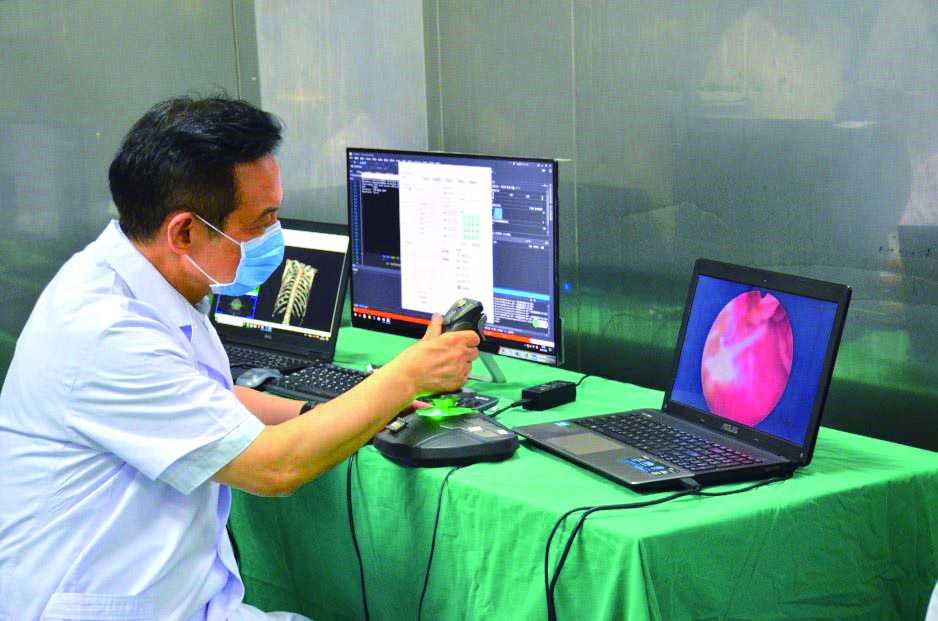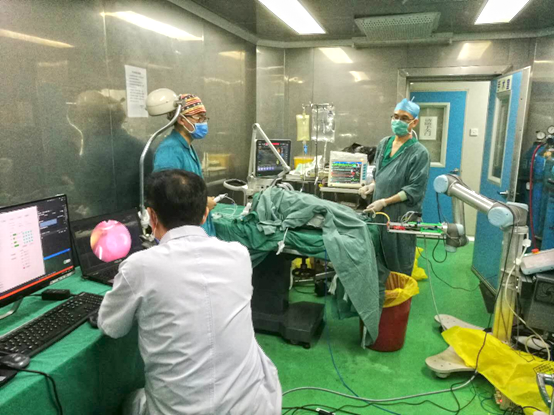A natural orifice surgical robotic system jointly developed by the Department of Urology, PUMCH and Beihang University Robotics Institute saw a successful pre-clinical animal experiment on July 26, 2018 at the hospital’s animal experiment center, with many pre-set goals hit. The robot, a world-class one, is of our own intellectual property rights and has obtained many Chinese patents and is now applying for international patents.
Transurethral resection of the prostate (TURP), a classic surgery, has been widely carried out since the 1970s. Professor Li Hanzhong from the Department of Urology, PUMCH has successfully performed more than 6,000 such surgeries. It is minimally invasive but difficult, and hard to be standardized; the patient is in a special position and gets tired easily, adding risk to the operations. Given this, Li, considering the anatomical features of the surgery and robotic and artificial intelligence, put forward the idea two years ago of developing a robot that operates through natural orifices. He worked closely with Associate Professor Wang Junchen with Beihang University Robotics Institute, and formed a research team led by Li and supported by Wang, Associate Professor Zhang Xuebin and Doctor Deng Jianhua.
The research was the first of its kind in the world. A surgical robot is a multi-disciplinary thing combining medicine, material, information and control. It is technologically difficult as it has to achieve basic functions as compatibility with current resectoscope, accurate control of resection, accurate location of cutting and bleeding points, intelligent image guide, human-computer interaction and remote control. The team worked hard to decide the robotic type, control algorithm, surgery plan, way of human-computer interaction, improved the hardware design and algorithm design and broke technological bottlenecks including the modeling of the robotic end, accurate control of the resectoscope and image guide. After repeated tests and modifications, the whole prototype system was shaped. After many in vitro experiments, the robot was able to complete basic moves and was ready for animal experiment.
On July 26, the robot’s first test of transurethral resectoscope on animal was performed and reached pre-set goals. It was led by Li and assisted by Wang, Zhang and Deng. The test proved the robot’s safety, stability, accuracy and practicability, and pointed to possibility of clinical tests.

Professor Li Hanzhong operates the robot.

Scene of animal experiment
Photo source: Department of Urology
